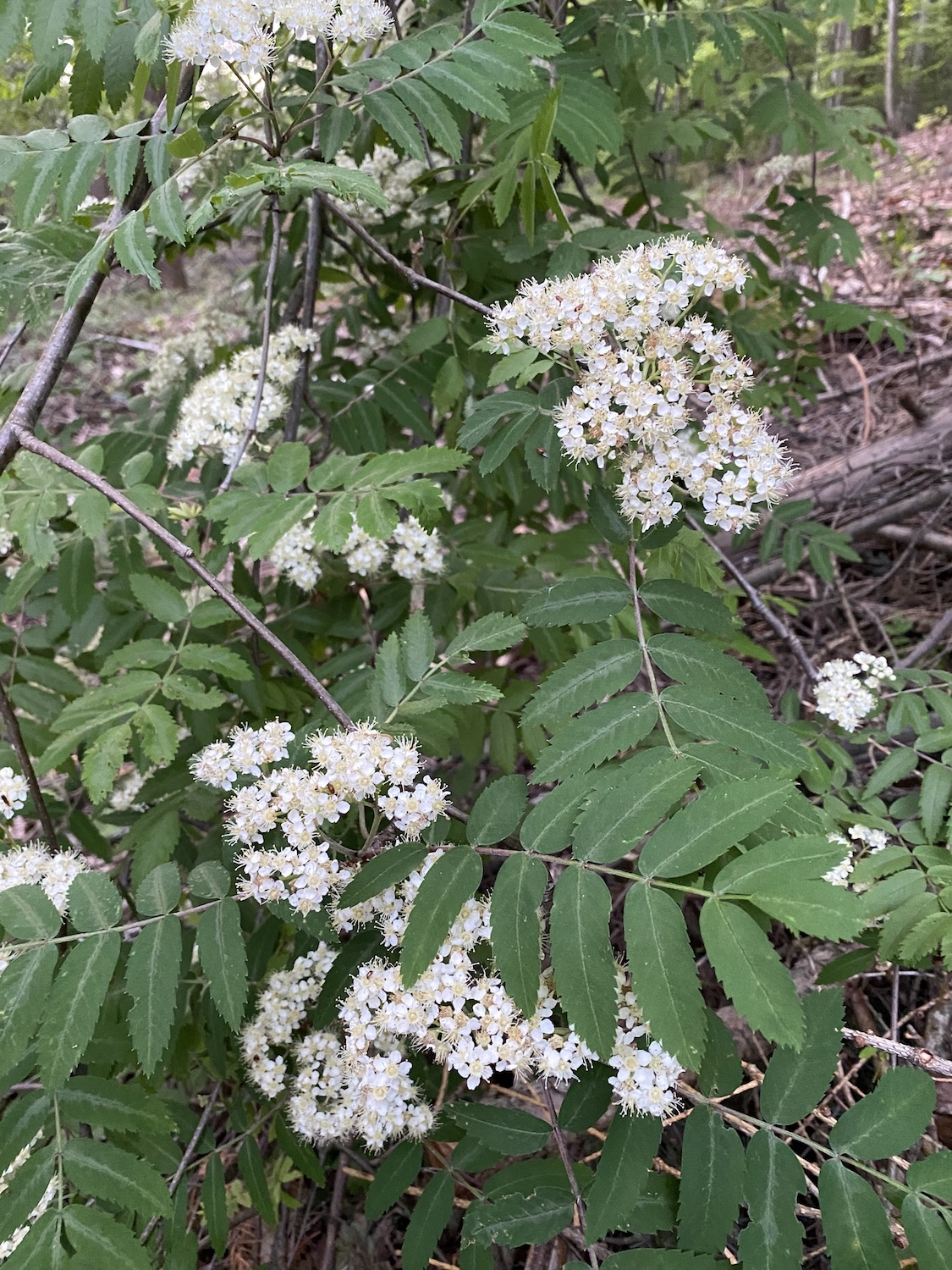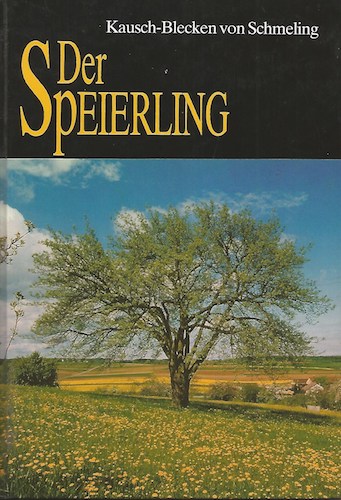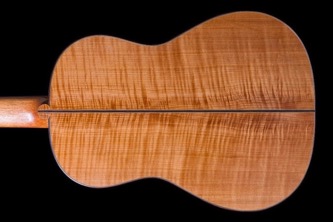Sorbus
From a Luthier‘s Notes:
“About sorbus Domestica”
Sebastian Stenzel, Mai 2021
When I mention this tree, the usual reaction is „what? I never heard of that!“. Indeed most people have not, even though its wood was once one of the most highly coveted and sought-after ones in Europe. Sorbus domestica, in German „Speierling“, in English „sorb tree“ or „whitty pear“, in French „cormier“, has the highest density of all larger trees growing in Europe, about 0.88 g/cm3, similar to the heavier rosewoods like Brazilian rosewood (dalbergia nigra) or cocobolo (dalbergia retusa). And in fact, I find the acoustical properties of sorb tree indistinguishable from those of cocobolo, which some guitar makers consider the best of all tonewoods for back and sides of the guitar. Sorb tree wood is very beautiful, especially when it shows „flame“, it has excellent tonal properties and it is very good to work with and polish. Well seasoned, it is not prone to cracks, even when exposed to extreme humidity changes, which makes it one of the best woods for bagpipe pipes, oboes and similar wind instruments. Before prices for steel plunged in the late nineteenth century, it was used for many tools, because it has the greatest wear-resistance of all European woods. Some years ago, I visited a very old, but still working windmill in the Vendeé in France, near the Atlantic coast. On its main, huge wooden cogwheel hung a dry branch of sorb tree, which I could recognise from its leaves. With bad French/English (and bad English/French, respectively), I learned from the guide, who was very happy to meet someone who actually knew that tree, that sorb tree was used for the cogs of all the cog wheels of the mill. He also told me that in the old times, sorb trees lined the fields and creeks, because farmers and craftsmen needed it for any kind of tool. Those days are long gone. In the last decades, the sorb tree‘s scarcity was its greatest impediment. This has two main reasons: the tree often stands alone in the forest and is so rare that a real market for its wood never developed. Second, it is often sold together with its relatives, sorbus tominalis (Elsbeere, chequer tree, sevice tree), sorbus aria (Mehlbeere, whitebeam) or even with pyrus communis (Birnbaum, pear tree) together as „Swiss pear tree“, even though their bark and leaves are quite different. (S. torminalis is also a wonderful tonewood, which I hope to present here at another time.) Old large sorb trees are sometimes shown in maps, and some even make it to a certain celebrity status. One of those was the huge sorb tree near Ölbronn in south-west Germany, pictured on the cover of this book: I happened to buy a car near there and decided to pay it a visit. The first person I saw in the streets of Ölbronn pointed me to the tree just outside the village. But all I found was an enormous (more than 4 meter circumference) stump, looking as if the tree had fallen in a thunderstorm. A bit disappointed, I drove away, wondering what had become of its wood. On this website, recordings and pictures of this or similar guitars I made with sorb tree can be found. The fact that the highest price ever paid for one of my instruments (up to the time of writing) was for a guitar with back and sides of sorb tree may be taken as a reconfirmation of the tonal qualities of this wood. The carpenter-wood merchant I bought all my sorb tree from is specialised in rare local woods, and one of the most ardent in propagating and planting such trees. Once, en passant, I asked him, if he knew what had become of the Ölbronn sorb tree‘s wood. He gave me a mischievous smile and said „that‘s here with me“. I managed to talk him out of a portion he had left. You have to know that trunks from trees, which die a natural death from old age, usually have no commercial value, because their wood tends to be infested by fungus. So this was only wood from the branches, albeit branches as thick as many tree trunks. Now, when I fit an oud with pegs I turned from this wood, I like to look at the picture of this magnificent tree, under which 12 generations of humans had taken shelter from sun and rain, and then my mind goes silent in awe. This short text is meant to be nothing more than a teaser, hoping to tickle the reader‘s interest in sorbus domestica. The book with the sorb tree of Ölbronn on the cover (Kausch-Blecken von Schmeling, Bovenden 1992, ISBN 3-88452-921-8) went out of print, but fortunately, it is available for free in the internet. Unfortunately for some, though, it is in German, but I am sure, plenty of information can be found in some other languages, too.
Currently, the climate crisis and a generally heightened awareness about environment and nature, as well as the latest research about trees and forests has led to a parameter change in forestry in which sorbus domestica is again appreciated as a jewel of the forest. However, its reproduction and dissemination is difficult and in human controlled forests rarely happens without human intervention. Fortunately, more and more help is being given, and in the forest where I live, I know of three young sorb trees within a 500 m radius, and I assume there are more. Here is one of them flowering last week:

Some years ago, I found the most beautiful sorb tree wood imaginable, coming from one of the largest sorb trees ever grown in central Europe. I was lucky to buy a large portion of that tree, some of which I have used in several guitars, as in this one:
I am also using sorb tree wood for most bridges of both my guitars and my ouds, for the bindings of many of my guitars and it is my first choice to turn oud pegs from.
To obtain sorb tree and related woods, or young trees for planting, please contact Thomas Kellner at info@urholz.de .